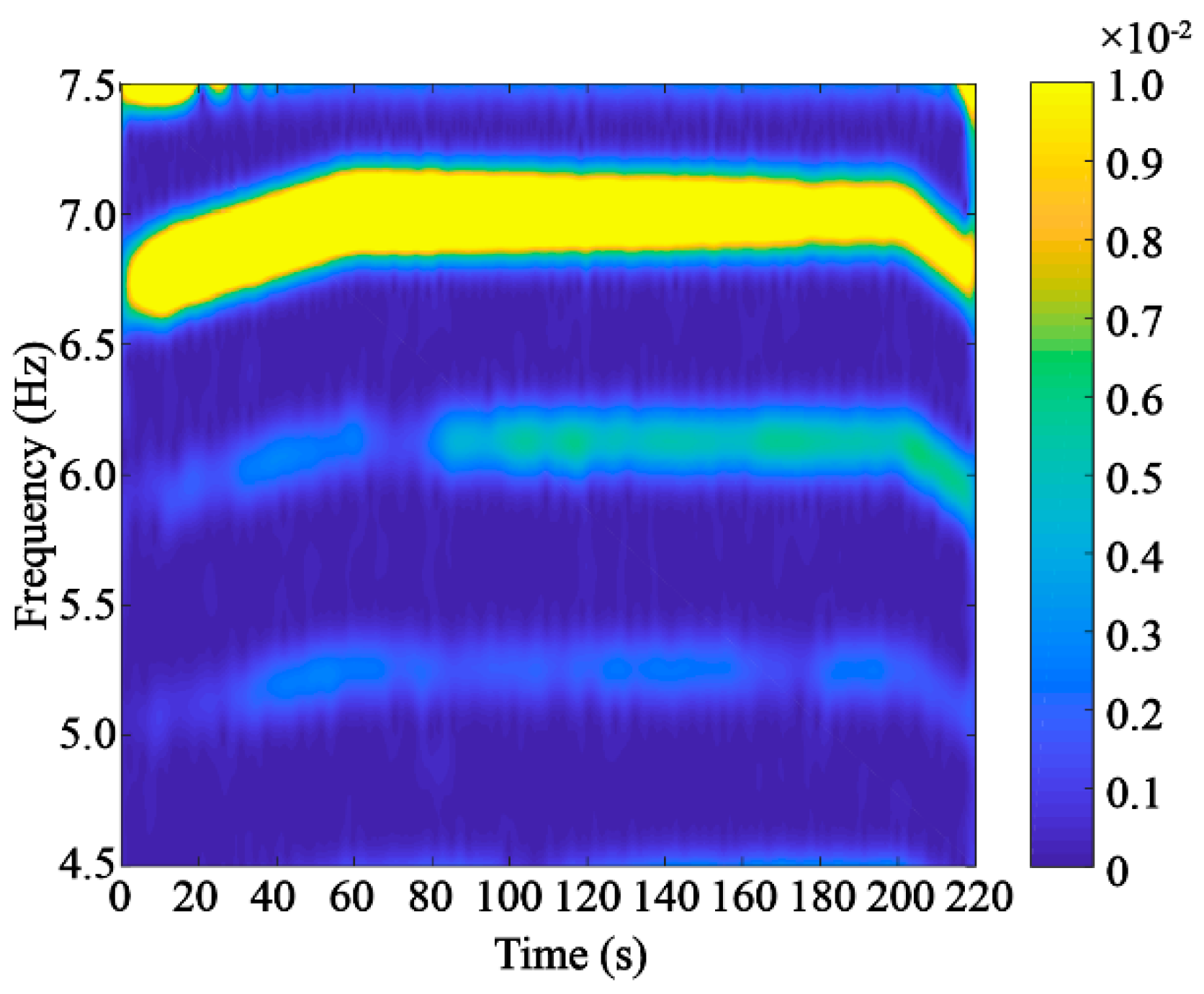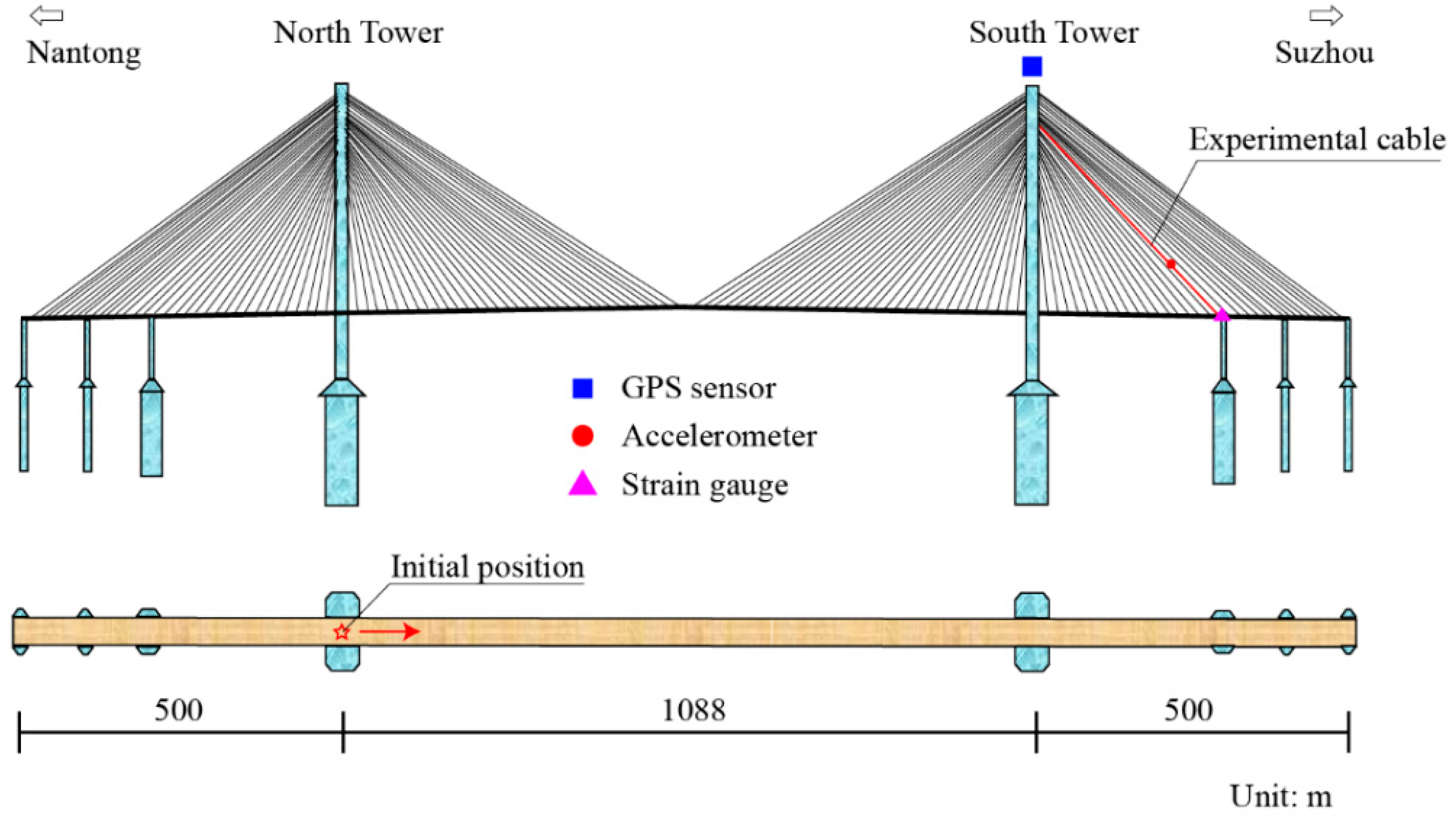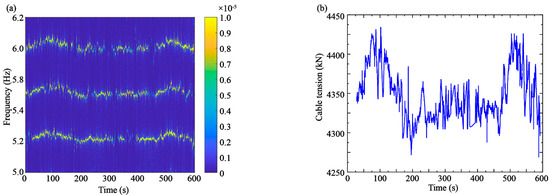Investigation of Time-Varying Cable Tension of Bridges Using Time-Frequency Reassignment Techniques Based on Structural Health Monitoring Data
Cables have been increasingly utilized in modern long-span or tied-arch bridges as the main bearing structures. Real-time identification of time-varying cable tension is essential for assessing the service performance of bridges. Vibration-based methods have been an increasing research focus in recent decades. However, a long time interval is needed to estimate structural frequency using vibration-based methods, increasing the calculating time of cable tension. The time-varying cable tension is thus difficult to extract. This study proposes a time-frequency reassignment-based algorithm to reduce the detection time to address this issue. Combined with a time-frequency analysis tool and vibration theory of cables, the algorithm can identify the time-varying frequency and further quickly calculate the time-varying cable tension within 12.8 s. The features of the proposed algorithm are mainly threefold: identifying the time-varying frequencies with high precision; without some prior knowledge of vibration; having no other requirements for sensor modes. Moreover, the experimental validation is conducted using a quasi-static loading in a workshop and a dynamic field test on Sutong Bridge, respectively. The results show that the proposed algorithm can be used to identify time-varying tension and assess the service performance of cables, providing a new path for real-time condition monitoring of bridges in service.

Figure 1. Acceleration of the cables by (a) Sensor 1, (b) Sensor 2, (c) Sensor 3, (d) Sensor 4, and (e) Sensor 5.

Figure 2. STFT of measured acceleration response by Sensor 1.

Figure 3. Basic information on the experimental bridge and sensors.

Figure 4. (a) TFR spectrogram of measured acceleration responses and (b) identified cable tension using 15th frequency.

Figure 5. Comparison of cable tension to (a) stress and (b) GPS displacement.

Figure 6. Assessment of service performance of the cable. (a) Results of the field experiment and (b) identified cable tension from 2017 to 2019 and an abnormal condition during strong winds.
DOI: 10.3390/APP12084008